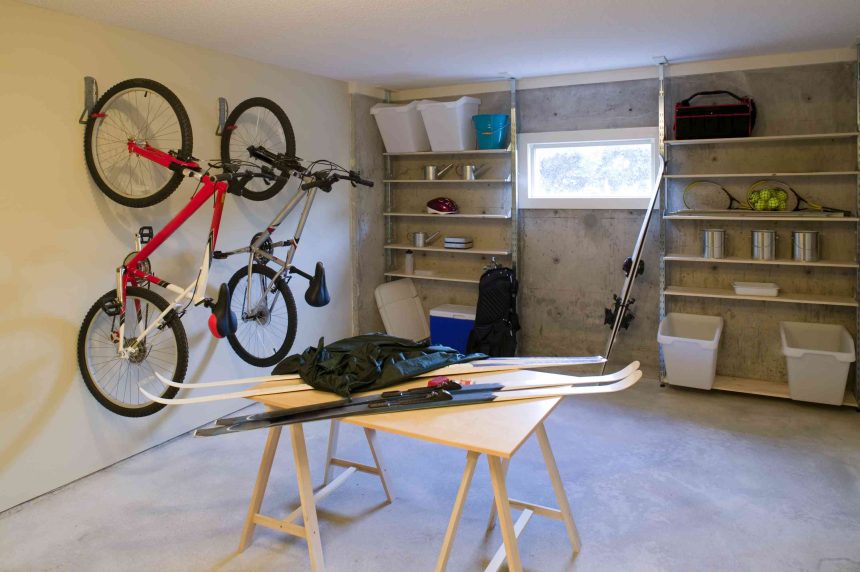Decluttering a space as large as the basement can feel daunting, to say the least. Especially when getting rid of sentimental items is involved. But a tidier, less-cluttered basement is far more useful (and far less stressful) than the alternative.
So, we reached out to organizing expert Courtney Cummings to get her pro tips on decluttering your basement. “A few simple changes and your basement will no longer be the subject of nightmares,” says Cummings. Here’s what we found out.
Start a Timer and Be Prepared
“Go through everything. It is time intensive and can be emotional, but it is the first step to a more organized space,” says Cummings. She even suggests making a game out of it to motivate yourself: “Set a timer for 15 minutes and go through one area. Too easy? Extend that time to 25 minutes and see what you can accomplish.”
Consider getting rid of rarely used items, especially if they’re in poor condition. As you sort through whatever is hiding in the depths of your basement, have four boxes at the ready: one for items you want to sell, one for items you want to donate, one for things that need to be tossed from the basement, and one for items that should be moved to a different part of the home.
Work from Wall to Wall
As you declutter, try not to bounce around the basement. This will only make it harder to stay focused and keep track of what you’ve done. Instead, pick the corner closest to the entrance to start in and work clockwise (or counter-clockwise) from it.
If you lose steam or get distracted, set a 10-minute timer to give your focus a bit of a break. After the timer goes off, dive back in where you left off.
Set Goals
It’s easy to feel overwhelmed when decluttering spaces as large as the basement. To fight against this, set a goal for any basement decluttering sessions. Your goal could be as large as ‘clear out half the room’ or as small as ‘declutter the corner near the door.’
Whatever the goal, aim to work through all the steps of decluttering—going through everything, organizing what remains, and finally, actually donating/selling/tossing what needs to go—before marking it as done.
Purchase Sturdy Shelves
“I recommend investing in quality, heavy-duty shelving in order to get your bins and boxes (and other items) off of the floor,” says Cummings. “When left on the ground, boxes are susceptible to water damage, mold, mildew, and critters.” Keep those boxed family heirlooms safe from mice and moisture by keeping them elevated.
When installing shelving, make sure it’s secured into studs, rather than drywall—this ensures the shelves stay where they’re mounted and don’t fall out after a few weeks.
If you’re struggling to find studs in the right spot for your shelving needs, consider hanging shelves with heavy-duty chains from the above floorboards instead. Just make sure the floorboards are damage-free and can support the weight of heavy shelves.
Use the Right Containers
Think beyond cardboard boxes when it comes to basement storage. Instead, consider plastic bins, drawers, and baskets in a variety of sizes. This ensures you can make the most out of your space and your needs.
Cummings adds: “Whatever the situation, look for weathertight options so excess moisture and pesky bugs don’t ruin your favorite Christmas garland or little Timmy’s favorite sweater.” Boxes, bins, and baskets should all be tightly lidded, rather than left open, to keep dust, moisture, and critters out.







